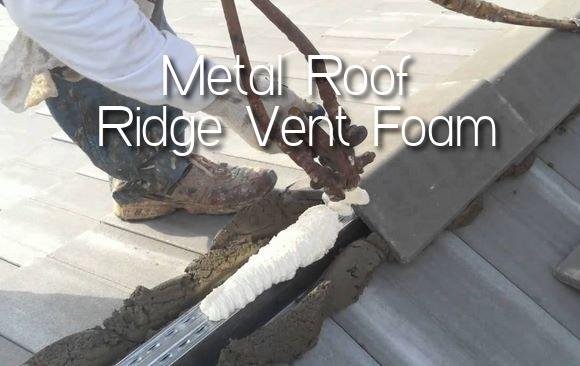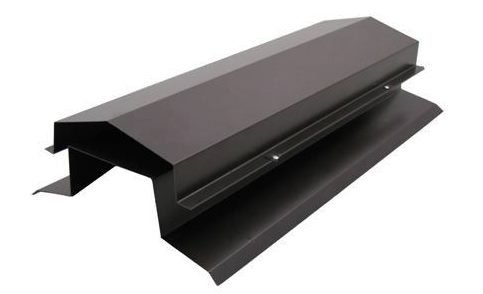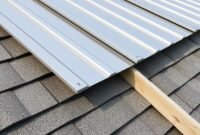Mold and deteriorating shingles are common issues in homes where indoor air isn’t properly expelled. Metal roof ridge vent foam is an effective solution to prevent these problems by managing heat and moisture.
A house, being an enclosed system, requires proper ventilation to maintain insulation and airtightness. This is particularly crucial for the attic, which accumulates most of the building’s heat.
In my experience working on a residential project in a coastal region, installing ridge vent foam significantly improved the attic’s ventilation while preventing salt-laden air and pests from entering the structure.
The homeowners reported reduced humidity and fewer issues with rust on the metal surfaces. This direct experience underscores the practical benefits of selecting high-quality foam for your metal roof.
Guide to Know Metal Roof Ridge Vent Foam
Metal roofs have been used on houses, buildings, and barns worldwide, especially in the United States, since the 1700s. However, it doesn’t always look like how it is now.
Nowadays, metal roofs come in different shades and colors. The use of ridge vents on a metal roof is also a convenient advantage that can be enjoyed now.

Ridge vent foam for metal roofs helps keep the house cool during warmer climates. It prevents heat from distributing throughout the building through the attic, which gathers during the day.
Also Read : Types of Metal Roof Ridge Vent Closure to Protect Roof
This can lead to moisture-induced issues such as decreased air quality, mildew, mold, or structural damage. Some of these problems are expensive, so getting a ridge vent is a logical solution to decrease their occurrence.
In colder climates, it helps prevent ice and water damage. It keeps the attic’s temperature low, preventing roof snow from melting and refreezing, which can lead to water runoff.
| Ridge Vent Type | Best Used For | Advantages | Disadvantages |
|---|---|---|---|
| Low-Profile Ridge Vent | Heavy rainfall areas | Provides good ventilation; low visibility | It may be less effective in extreme heat conditions |
| Foam Ridge Vent | Wooded or rural areas; cold climates | Excellent pest barrier; retains heat in cold areas | It can be noisy during heavy rain or hail |
| Metal Ridge Vent | Urban areas with moderate climates | Durable; complements metal roofing aesthetics | Can be noisy during heavy rain or hail |
Read also: Snow Guards on Metal Roof

Ridge vent gave the best benefits when you used it and vented soffit. Soffit lets air flow from it and gets out through the ridge – the basic vertical ventilation process.
People often installed gable vents on each side of the attic’s wall for horizontal ventilation to let the natural breeze flow inside. However, professionals generally do not recommend combining both ventilation systems because they will cancel each other out.
Traditional ridge vents, made from aluminium and featuring an exposed nail line, are vulnerable to the elements. This exposure can lead to contraction and expansion, weakening the structure.

The aluminum vent will rise off the roof because the nails are rising out, then the wind will blow them up. This process is a common cause of a leaking roof. That’s why several material replacements are being invented, including foam. Foam is also good for roof vents for corrugated metal, standing seam, r-panel, or g-panel.
Read also: Roof Ventilators in the Roofing Area
A secure ridge vent closure effectively prevents water penetration. Here are some benefits of it:
- Standard ridge vent benefits such as controlling temperature in both warm and cool conditions
- Requires low energy to operate
- Increases energy efficiency by allowing continuous airflow
- Inexpensive and zero-maintenance
- Don’t disrupt the building’s aesthetic because they are hidden underneath the metal panels.
- Can fit below any ridge cap
- Quick and simple to install
- It will prevent bugs, bees, wasps, bats, and insects from entering and living inside the attic space.
- The material is fire-resistant.
Using ridge vent foam makes it easy to detect a leaking problem. You must go to your attic and flash a light on the rafters. When there is a leaking problem, you will see a dark stain around the ridge vent area.
Typically, you can follow down the leak area that enters the house by trailing the drip from the rafter.


